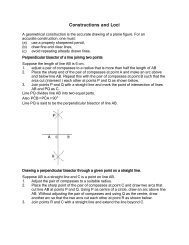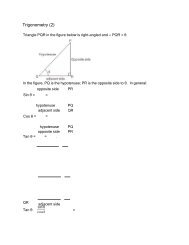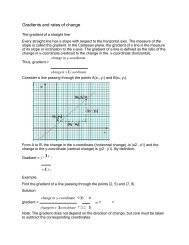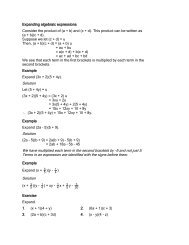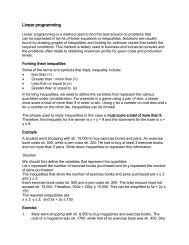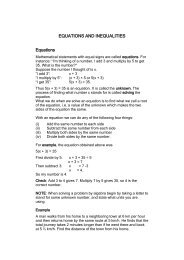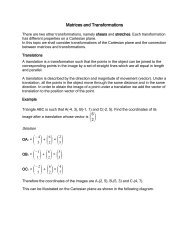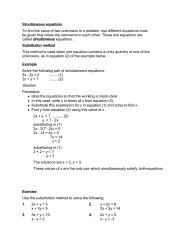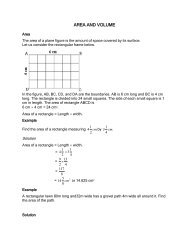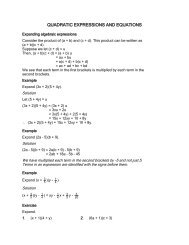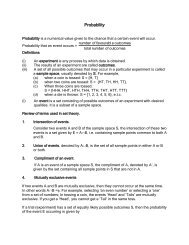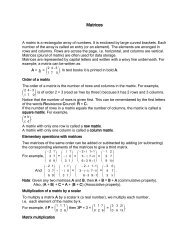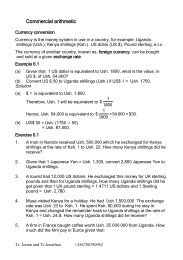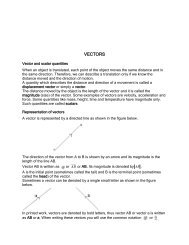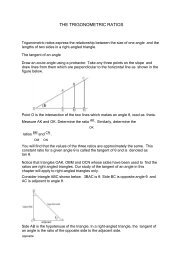bio3
Create successful ePaper yourself
Turn your PDF publications into a flip-book with our unique Google optimized e-Paper software.
Chromosomes & DNA Replication
I. DNA & Chromosomes<br />
• A. DNA is found in different ways depending on the<br />
type of cell you are looking at<br />
– 1. In prokaryotic cells DNA is located in the cytoplasm in<br />
a single circular molecule known as a chromosome<br />
– 2. In eukaryotic cells the DNA is located in the nucleus in<br />
the form of many chromosomes<br />
• B. DNA must be folded into at least 1/100 of its full<br />
length to fit in any type of prokaryotic cell
II. Chromosome Structure<br />
• A. In eukaryotic cells DNA has to be<br />
folded even further in order to do<br />
this chromosomes use the help of<br />
proteins.<br />
– 1. Histones – proteins that have tightly<br />
wound DNA around them creating<br />
chromatin.<br />
• B. Together histones and DNA form a<br />
structure known as nucleosome,<br />
which gets further coiled into loops.<br />
– 1. Only during mitosis are these fibers<br />
drawn together forming the tightly<br />
packed chromosomes. Which may help<br />
separate chromosomes during mitosis
III. DNA Replication<br />
• A. Each strand of the DNA double helix has the<br />
information to reconstruct the other half by base<br />
pairing.<br />
– 1. Since each strand can be used to make the other the<br />
strand are said to be complimentary.<br />
• B. In prokaryotic cells replication occurs at one point<br />
and proceeds in 2 directions until the entire<br />
chromosome is replicated<br />
• C. In eukaryotic cells replication occurs in many points<br />
known as replication forks until each chromosome is<br />
completely copied
IV. Eukaryotic DNA Replication<br />
• A. DNA Replication – DNA molecule<br />
separates into 2 strands, then<br />
produces 2 new complimentary<br />
strands following the rules of base<br />
pairing. Each strand of the double<br />
helix serves as a template.<br />
• B. The 2 new DNA molecules each<br />
have one old strand and one new<br />
strand<br />
• C. In order for replication to occur<br />
DNA helicase “unzips” the DNA so<br />
that DNA polymerase can join the<br />
new nucleotides and proofreads to<br />
ensure correct base pairing



